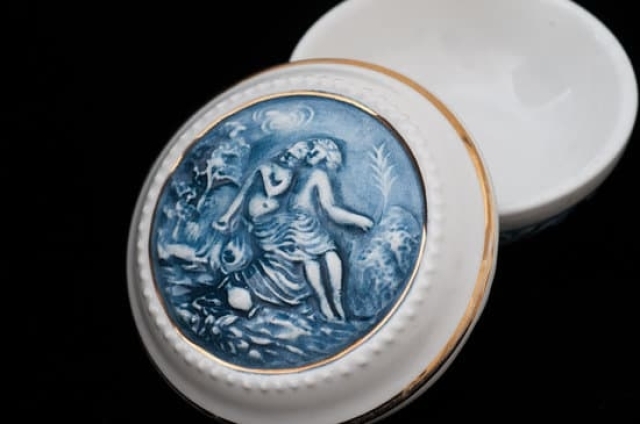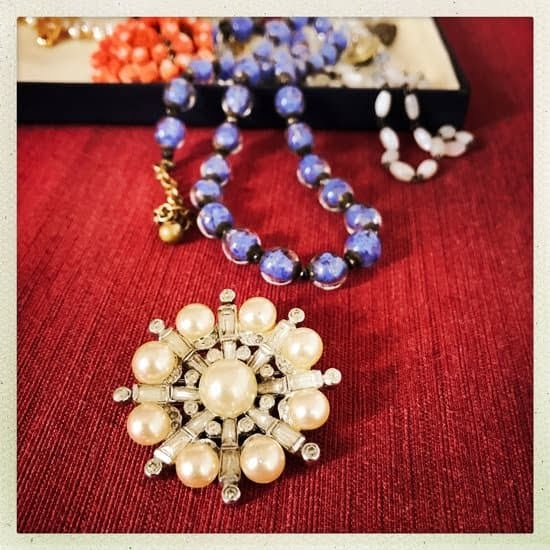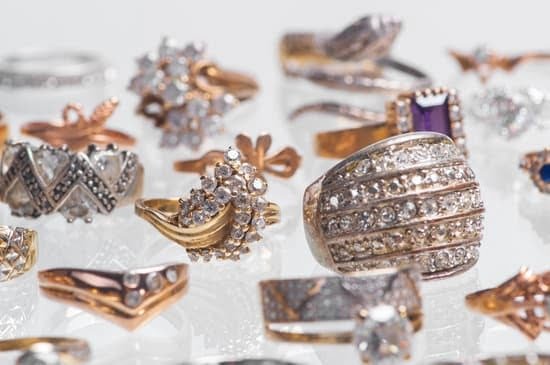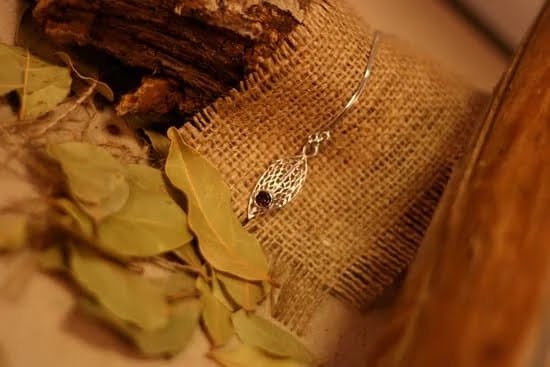3D print metal jewelry is a new technology that has revolutionized the way that jewelry is created utilizing environmentally friendly materials. 3D printing uses additive manufacturing processes to create metal and plastic based jewelry pieces from digital designs in a much more efficient way than traditional smithing methods.
Through this process, complex shapes and detailed designs can be done quickly and cost effectively without having to sacrifice quality. This makes it possible for hobbyists to enter the world of jewelry making with little investment, while also allowing professionals with larger scale operations to keep their production costs low.
The history of using 3D printing technology in the jewelry industry stretches over more than 30 years. It all began when several companies developed machine systems for rapid design-to-prototype fabrication in the late 1980s. Soon after, consumer laser sintering machines became popular and they revolutionised the way custom jewellery was designed.
Laser Sintering allowed jewelers to design prototypes directly from a computer aided design program without having to deal with assembly, casting or tooling of any kind. This made customized jewellery easier and cheaper to produce than ever before – something many people take for granted today when ordering personalized necklaces or other such pieces online.
Nowadays, 3D printed metal jewellery (most common materials used are stainless steel and titanium) continues to advance with exciting advancements in stereolithography (SLA), direct metal laser sintering (DMLS) and selective laser sintering (SLS). SLA technology creates precision parts out of liquid resin through an ultraviolet curable mixture of plastics which can later be plated with gold or silver thus creating stunning fine jewellery pieces.
The benefits of using 3D printed jewellery as opposed to traditional methods are significant due to increased flexibility regarding wax moulds as well as cost savings associated with labour and material cost reduction. When it comes to cost, prices usually range between $20-100 per piece so it is a great option for anyone looking for affordable custom made jewellery that looks stunning yet doesn’t break the bank.
Process of Making 3D Print Metal Jewelry
The process of making 3D print metal jewelry involves several steps, starting with designing the 3D model which will be used to produce the desired outcome. Depending on the complexity of the piece being made, one could either design their own model using a CAD program, or they could download free or paid models from various sites online.
Additionally, there are also many libraries and stores that have pre-made models available for purchase. After obtaining the necessary 3D model, it should then be uploaded into a slicer program which will convert it from an STL file format into individual slices that can be read and interpreted by a 3D printer.
Once the model has finished slicing and is ready to print, the 3D printer needs to be set up with precision and care as small errors in this part of the process could throw off the whole outcome. The settings need to be adjusted depending on whether you plan to use plastic filament or metal alloy as your build material.
With plastic filament, all that’s needed is a heated bed since this type of material doesn’t require additional support structures. However, if you plan on printing metal alloy parts, then you’ll need to adjust your printer for working with higher temperatures and incorporate support structures for optimal results when printing intricate jewelry pieces.
After setting up the 3D printer properly, it’s time for actually printing out the desired pieces of jewelry based off of your original model design. The time required for each piece can vary depending on size but typically range between 1hr-8hrs per single item; however, after completing printing multiple batches at once you’ve got yourself some beautiful looking unique pieces of jewelry definitely worth all that effort.
Once finished 3D printing your models you may decide to further finish them by polishing or painting according to preferences before wearing them out in public or giving them away as gifts; either way you’re sure to get compliments galore.
Different Types of 3D Printed Metal Jewelry
When it comes to 3D printed metal jewelry, there is a variety of options. From materials, to quality and colors & finishes, it can be difficult to decide which type suits you best. Whether you are looking for something special and unique, or something more traditional, this quick guide will help you make the right decision for jewelry that reflects your own personal style.
Materials
The most common type of 3D printed metal jewelry is made from stainless steel or silver. Both of these metals are widely used due to their durability and versatility. The cost of each metal also varies greatly depending on the specific type chosen as some stainless steel products require more chemical coating in order to prevent rusting while silver offers a more natural finish that may become tarnished over time.
Quality & Durability
The quality and durability of 3D printed metal jewelry depends on several factors such as the materials used, the level of care taken when using it, and general storage conditions. Stainless steel tends to be sturdier and requires less maintenance than silver which has higher levels of microbial activity so proper storage is essential for keeping your jewelry looking its best for years to come.
With proper care and maintenance both metals can be expected to last a very long time and remain beautiful – but always check with your retailer about their specific recommendation for caring for your product because every brand may have different recommendations based on their specific formula.
Colors & Finishes
3D printed metal jewelry can be made in almost any color imaginable thanks to various plating processes available in the market today – from classic gold & silver hues through more vibrant colors like red and blue. There are also additional finishing techniques including polishing, sandblasting, antiquing or enameling which add texture and further enhance its appearance – making every piece truly unique.
Finally there is even the option for custom engravings in order to personalize the product even further by adding names or messages that will keep sweet memories alive forevermore.
Benefits of 3D Print Metal Jewelry
3D print metal jewelry is revolutionizing the way that people can craft their jewelry. Instead of relying on traditional processes such as molding, casting or forging, 3D printing provides a much faster and simpler way to create custom designs with minimal effort. Moreover, due to the combination of metal and modern 3D printing technology, many advantages come with this method compared to other processes.
Comfort
One of the main benefits of 3D printed metal jewelry is its comfort level for everyday wear. Since 3D printing offers flexibility in design, it has made creating custom shapes much easier compared to traditional methods. This means there can be well-designed details and smooth surfaces that allow for maximum comfort even with constant wear. Furthermore, since these pieces are tailored specifically for individuals, they form a perfect fit which offers long-lasting support and comfort.
Durable Design
The durability of 3D printed metal jewelry also makes it stand out from other crafting methods. When using CO2 lasers to sinter metals together during the 3D printing process, molecules within the material end up rearranging themselves into very dense configurations. This forms strong bonds throughout the whole piece which lead to great strength and excellent durability even with delicate details or complex designs involved.
Resistant to Tarnishing
Finally, due to highly controlled conditions when manufacturing and metals like titanium being used-tarnish resistance is an important benefit associated with 3D printed metal pieces. Titanium won’t react with oxygen or moisture-leading to a long lasting shine regardless of jewelry maintenance routines or frequent daily wear activities such as exercising or swimming in chlorinated pools.
Furthermore, unlike silver plated jewelry, no polishing routine will be required over time as titanium will remain its natural color while maintaining a more aesthetically pleasing look.
Common Pitfalls to Avoid When Making 3D Print Metal Jewelry
Tool Selection
When embarking on a 3D metal printing project, choosing the right tools for the job is one of the most important steps. The size, shape and material of metal need to be carefully considered in order to achieve optimal results. It is best to start with a simple design that has few intricate details, as these will require more effort to print.
Complex designs may need specialized tools and materials that require additional research. Before beginning, it is essential to identify the size of metal piece desired, as well as which type would be best suited for your project. Teflon-coated tools are highly recommended when dealing with delicate pieces as they reduce friction and improve quality.
Prep Techniques
Preparation is key when making 3D printed metal jewelry in order for the metals to adhere correctly. Prior to printing, it’s important to clean the part that will be used for contact with metals. Additionally, sandpaper can be used lightly on both surfaces before applying any adhesive for better adhesion and fewer messes during the process.
After affixing together, hold the part in place until completely dry; this step will greatly lessen any post-print clean up efforts. Properly preparing and handling parts prior to printing helps enable a successful outcome with minimal frustration from correcting prints due to mistakes made that could have been avoided pre-printing.
Tips For Printability
The correct printer setup can go a long way towards a successful 3D printing endeavor by eliminating potential issues like warping or overspray during print process time. The nozzle size should be adjusted accordingly depending on how much detail is desired – smaller nozzles produce finer details while larger nozzles help enhance speed or accuracy especially if fine features are not needed.
Additionally, using specialized filament types designed for metal jewelry like brass or nickel plated plastic, allow for improved aesthetic quality and strength of connections between each printed layer which ultimately make a bigger impact on product longevity than traditional plastics do after repeated use and exposure environmental elements (e.g., rain).
Tips & Tricks for Optimal Results
3D printing is becoming an increasingly popular technology for creating metal jewellery. It allows you to create intricate pieces with precise detail and at a fraction of the cost of traditional casting methods. In this article, we’ll explore the tips and tricks of working with 3D printed metal jewellery. We’ll cover the best printing techniques, post-processing options, and different finishes available for your pieces.
Best Printing Techniques
When it comes to 3D printed jewellery, it’s important to use the right printing technique in order to get the optimal results for your pieces. Here are some of the best techniques to use when printing metal jewellery:
- Direct Metal Laser Sintering (DMLS): DMLS is one of the most widely used techniques when it comes to 3D printed metal jewellery. With this technique, a powerful laser sweeps across layers of fine particles of powdered metals which are then heated and fused together layer by layer.
- Selective Laser Melting (SLM): SLM is another popular option when it comes to 3D printed metal jewellery as it provides excellent surface finish quality and resolution. This method works similarly to DMLS but uses a higher power laser that melts instead of sintering.
- Direct Inkjet 3D Printing: This process utilizes a specialized jet printer which ejects droplets of liquid metal onto a heated build platform in order to print intricate patterns or shapes.
- Laminated Objects Manufacturing (LOM): LOM utilizes thin layers of material pressed together under heat and pressure until they bond together into one piece. This technique can be useful when dealing with larger parts as multiple layers can be added quickly.
Post-Processing Options
Post-processing is an essential part of the process when creating 3D printed metal jewellery. Here are some post-processing options you may want to consider:
- Annealing: Annealing is a process whereby heat is applied in order to remove any stresses in the material caused during manufacturing. this can help strengthen or soften certain materials depending on what type you are using.
- Polishing & Finishing: Polishing and finishing helps give your prints a glossy shine, smooth out any irregularities, or add texture depending on your desired outcome.
- Plating & Coating: Plating and coating processes help provide extra protection from wear and tear as well as add extra luster if desired.
- Enameling & Coloring: Enameling helps seal in colors while creating detailed patterns through chemical compounds applied onto the surface during heat treatment.
Different Finishes Available
Once you’re done with post-processing, there are many different finishes available for customized looks. Some popular options include brushed stainless steel, satin gold plated brass, polished bronze, colored enamel coating and more. It all depends on what design aesthetic or color palette preferences you have for your project.
Creative Design Ideas for 3D Print Metal Jewelry
One of the most popular trends for jewelry to make as gifts or to buy for yourself is 3d printing metal. This innovative technique is ideal for fashion-forward items, allowing you to create pieces with unique shapes accompanied by intricate details. Here are some inspirational guide points on 3D printed metal jewelry and how to make your own designs stand out.
Style Patterns
When it comes to 3d printed metal jewelry, style patterns provide endless design possibilities. For instance, if you opt for an abstract pattern such as spirals or a geometric arrangement of dots or lines, you can create interesting and eye-catching pieces that won’t be easily replicated. Additionally, these styles will look modern but still manageable enough to wear on a daily basis.
Texture Variations
You can also experiment with texture variations when it comes to 3D printed jewelry. Holographic effects paired with subtle irregularities in the shape of the piece can provide a unique look and feel than more standard designs will lack. You can also add bits of sparkle with rhinestones or glitter for added glitz and glamour that will dress up any item nicely.
Combining Materials
Another thing worth considering when making your own custom 3D printed metal jewelry is combining different materials into one piece. For example, why not mix gold and silver together? Or binary metals like steel and brass?
These combinations result in striking pieces that embody strength, complexity, or even symbolism that regular manufactured jewellery typically won’t achieve. While it may take some trial and error before you get the effect you have envisioned, this idea could really open creative ideas as to what kind of pieces that can be made.
Conclusion
3D print metal jewelry has revolutionized the jewelry industry and forever changed how custom jewelry is designed and produced. With a 3D printer, it’s possible for anyone to produce stunning and intricate designs with a fraction of the cost and time required by traditional methods. From simple wedding bands to one-of-a-kind pieces of art, 3D printing in metal makes it easier than ever to create beautiful pieces that stand out from the crowd.
The future of 3D printed metal jewelry looks incredibly promising, with more people discovering the benefits of this cost-effective method of production every day. It’s expected that advances in technology will make 3D print metal even more approachable for consumers, as well as giving them access to high quality creative designs without breaking the bank.
With higher resolutions and greater accuracy being achieved, machines will become even more capable of producing pieces with incredible detail, allowing users to create astounding works of art from their own homes.
Overall, looking at what 3D printed metal jewelry has achieved so far indicates a bright and exciting future ahead. With increasing accessibility and ever improving design capabilities combined with its affordability relative to traditional production methods, there really are no limits when it comes to creating beautiful pieces of art or custom gifts thanks to 3D printing in metal.
Whether it’s for personal use or selling items on an online store, this technology offers many benefits for designers and makers alike – notably decreased costs and faster turnaround times – making it easier than ever before for anyone make dreams into reality through precision engineering and fascinating artwork in just a few clicks.

Welcome to my jewelry blog! My name is Sarah and I am the owner of this blog.
I love making jewelry and sharing my creations with others.
So whether you’re someone who loves wearing jewelry yourself or simply enjoys learning about it, be sure to check out my blog for insightful posts on everything related to this exciting topic!





